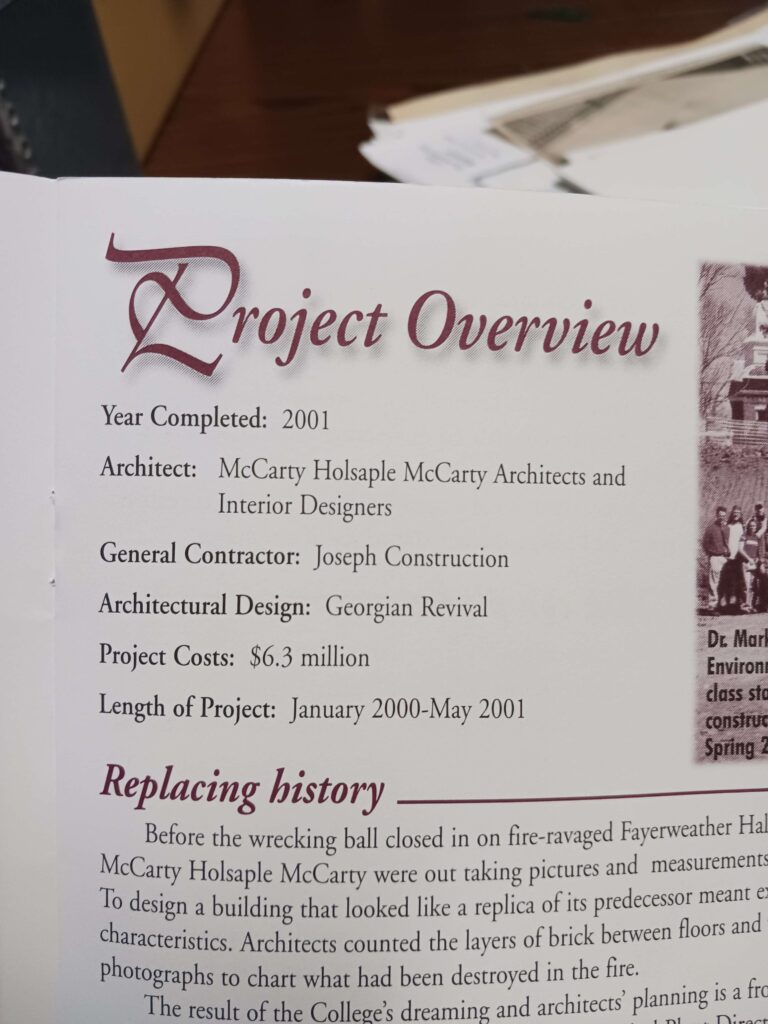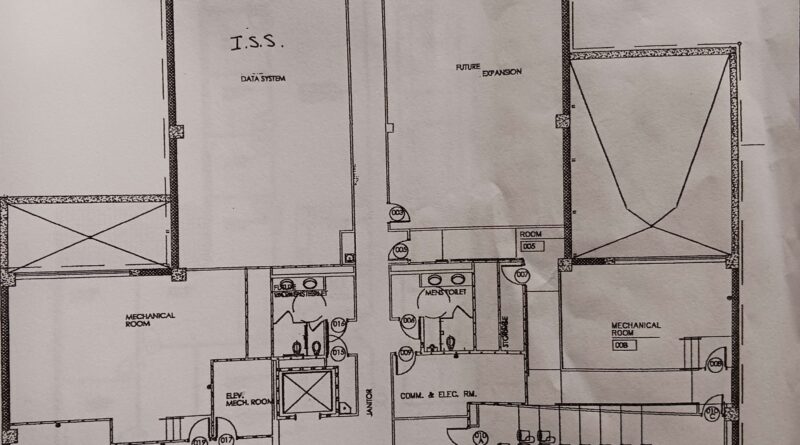Revisiting the Fayerweather Fire as the 25th anniversary approaches
With the 25th anniversary of the Fayerweather Fire approaching, few people still at MC actually remember the events that took place on that day. Not many people were even on campus on that fateful Sunday one week after the 1999 commencement ceremony; dorms were closed, and most professors and faculty would have been off campus for summer break at the time.
The last person out of the building left about forty-five minutes before the storm hit. The fire started at nighttime, during a thunderstorm in which lightning struck one of the fireplaces in the building, going straight down a chimney and throughout the building.
It took hours to calm down the flames enough to where fire fighters believed the fire wouldn’t spread to other buildings. Every now and then, mini explosions would be seen in the building’s flames. It took over 24 hours for the fire to be completely put out.
Puddles surrounded the building due to how much water was used during the firefight, and water damage permeated the building after. Firefighters needed so much water, in fact, that they had to build a temporary reservoir.
Water damage completely ruined many of the documents in the building. Photos placed in a stack melted together, unable to be peeled away without ruining the film.
Once Sutton was built in the 1960s, Fayerweather wasn’t used as a science hall anymore. Instead, office space, student development, student publications and the Student Government Association was on the second and third floors, and a post office, bookstore and Issac’s – something that would end up being an exacerbating factor in the fire – were on the first floor.
Issac’s was known at the time for having an intense greasy smell. That grease from Issacs did not help with putting out the flames whatsoever. It also didn’t help that the building, made in 1898, was made from flammable materials that had also absorbed chemicals used by the science facilities inside the building into the walls.
While brick was on the outside of the building, the inside was mostly wood. Most of the damage was done to the second and third floor, of which pictures can be found of the roof being completely collapsed into itself.
“You try putting out a fire that has a mixture of grease, chemicals, and wood and paper.” Amy Lundell said, referring to the combination of factors that lead to such a blaze. It’s also an interesting note that to the best of the College’s knowledge, it is the only fire on campus that wasn’t electrical in nature.
While some rooms were still standing afterwards, the water damage after the blaze was too much, and the entire building had to be taken down and rebuilt. In its place, a new Fayerweather building was built. However, the new building still bears strong resemblance to the old Fayerweather
“[It is] a modern, up-to-date building, but [they wanted] to make it look like the old Fayerweather on the outside…So it retained the character of campus.” Amy Lundell said.

It was reopened in 2001 with its original look and design. The old title slabs from the original building, spelling out “Fayerweather Science Hall,” were preserved. Additionally, two slabs spelling just “Fayerweather Hall” were installed to reflect the building’s new categorization. All the people who gave money and helped to rebuild the hall had their names engraved into the bricks in front of the building.
A basement was added to the new version, however, and the Maryville College Archives are now situated in the bottom corner of the building. Steps have been taken so that a fire that had been seen before would not be as damaging to the new building, and now Fayerweather houses the very documents that commemorate its near destruction.

